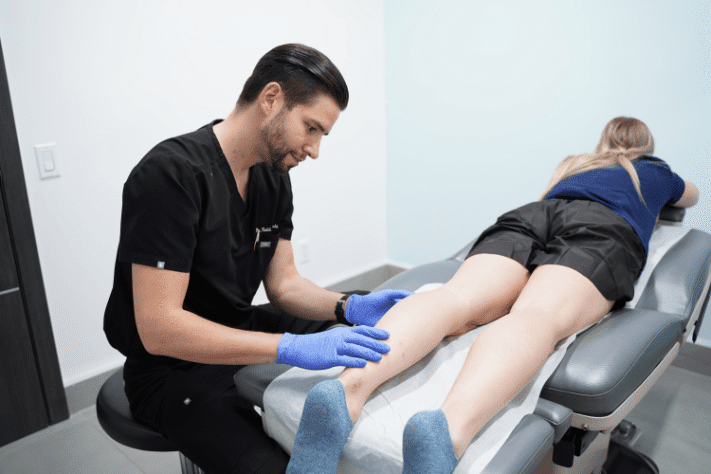Endovenous Laser Ablation (EVLA)
How does EVLA work?
During your first consultation, the vein doctor will carefully examine your leg veins to determine if you have varicose veins and spider veins. The vein doctor will administer advanced vascular imaging tests, such as duplex ultrasound, to visualize the blood flow in your leg veins, thus determining if you have chronic venous insufficiency. You have to avoid caffeine on the day of the procedure, and you must stay hydrated.
During the endovenous laser ablation procedure, the vein doctor will administer local anesthesia and make a small incision on your skin’s surface. The incision will be an entry point for the catheter, which will be driven into the diseased vein under ultrasound guidance. Once lodged in place, the catheter will be activated to generate laser energy, which will induce an inflammatory reaction, destroying the affected vein.
The accumulated blood will reroute into healthier leg veins, restoring optimal blood circulation to the heart. Meanwhile, the diseased vein will get absorbed by the body. The procedure is completely safe and effective.

EVLA: safety and efficacy
The development of minimally invasive vein treatments, such as endovenous laser ablation, transformed the landscape. Thanks to EVLA, chronic venous insufficiency and varicose veins can be treated as in-office, outpatient procedures under local anesthesia. The treatment involves one small incision, it concludes within an hour, and there’s no downtime. Furthermore, it doesn’t carry the same risk as vascular surgeries, and it has a nearly perfect success rate.

The pros and cons of EVLA
Pros of EVLA
- Non-surgical treatment
- Only one small incision
- No scarring
- Negligible risk of complications
- Minimal post-treatment pain
- No recovery period
Cons of EVLA
- Performed using needles
- Causes more post-treatment discomfort than radiofrequency ablation
Not sure if you’re covered?
